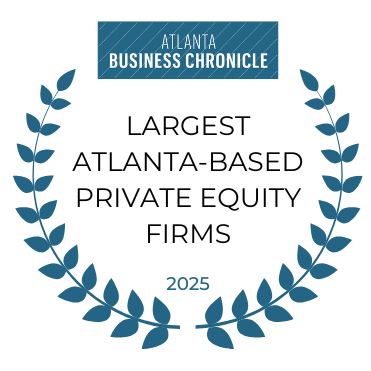Insights
NEW FEATURES BY DATE
List of Services
-
12/9/2025 Building Resilient Companies in a Complex Market: Quotes from Dean Ditmar12/9/2025
-
7/25/2025 Scaling with Intention: Growth Lessons from the Front Lines7/25/2025
-
6/6/2025 How to Position Your Brand for Acquisition: A Marketing Playbook for Sellers6/6/2025
-
4/16/2025 Cultivating a Culture of Accountability and Empowerment4/16/2025
-
1/1/2025 Case Study: Preserving Legacy While Driving Growth through Minority Deals1/1/2025
-
5/20/2024 Georgia Oak Associate Job Description5/20/2024
-
3/4/2024 1851 Franchise: "Private Equity and Sports: The MVP Playbook"3/4/2024
-
9/21/2023 (Atlanta Business Chronicle) Atlanta Braves legend joins Georgia Oak Partners9/21/2023
-
4/11/2022 Can You Raise Prices in This Market? If Not, When?4/11/2022
-
12/18/2021 Putting People First12/18/2021
-
6/30/2021 Staffing Industry Insights6/30/2021
-
3/18/2021 Remote Work: A Permanent Part of Every Industry3/18/2021
-
2/4/2021 A Year of Growth: Focusing on Human Capital in 20212/4/2021
-
8/27/2020 COVID-19 Leadership with Page Siplon, CEO of TeamOne Logistics8/27/2020
-
8/27/2020 Culture Shifts During COVID-19 and Beyond8/27/2020
-
7/23/2020 Georgia & National Labor Market Trends: A Look at Six Key Industries7/23/2020
-
7/23/2020 Miked Up: Organizational Diversity - Volume 2, Part 17/23/2020
-
6/16/2020 Virtual Communication in Uncertain Times6/16/2020
-
6/16/2020 Harnessing the Power of Technology6/16/2020
-
5/27/2020 Miked Up: Volume 1, Part 15/27/2020
-
5/6/2020 The Front Lines of Business Continuity5/6/2020
-
5/6/2020 Navigating the New Normal5/6/2020
-
1/8/2020 Build Successful Teams with These 5 Elements1/8/2020
-
6/5/2019 Minority vs. Majority Deals6/5/2019
-
3/1/2019 Video Case Study: Sailfish Boats3/1/2019
-
11/28/2018 What Is Your Legacy?11/28/2018
-
9/7/2018 Recruiting and Retaining Manufacturing Talent9/7/2018
-
4/5/2018 Navigating the Sale Process: From LOI to Post-Close4/5/2018
-
10/18/2016 Selling to Your Management Team10/18/2016
(Atlanta Business Chronicle) Slow, normal growth is the economic outlook for 2023: Atlanta financial experts discuss forecast in recent panel
By Jessica Saunders
SARA HANNA PHOTOGRAPHY
A recession is not likely in 2023, Atlanta-based economic observers agreed, and although the post-Covid growth surge is visibly slowing, it appears to be headed to a sustainable pace commensurate with the labor force, rather than turning negative.
Metro Atlanta Chamber Vice President and Principal Economist Ian Wyatt gave his 2023 forecast and then joined a panel that included Allison Dukes, senior managing director and chief financial officer, Invesco Ltd.; Michael Lonergan, managing partner, Georgia Oak Partners; and Bartow Morgan, CEO and board member, Georgia Banking Coompany, at the sold-out “Economic Outlook” event Jan. 19, presented by Atlanta Business Chronicle and Georgia Banking Company, before an audience of 200 at Piedmont Driving Club in Atlanta. David Rubinger, publisher and market president, Atlanta Business Chronicle, moderated.
The U.S. will have 1% to 1.5% growth in gross domestic product in 2023, with the strength of the labor market and a slowing rate of inflation as key drivers, while Fed interest rate hikes and slow demand for goods are headwinds, Wyatt said. China’s reopening after relaxing its zero-Covid policy is the big unknown, according to Wyatt’s presentation.
Although there has been widespread, persistent media coverage of the possibility of a 2023 recession — “The R-word is out there all the time. We almost are trying to talk ourselves into it,” he noted — Wyatt says he’s more optimistic than the crowd and that he’s not alone. Currently, most forecasters expect positive GDP growth this year.
SARA HANNA PHOTOGRAPHY
Normal — not a recession
In terms of job growth since the pre-Covid peak in February 2020, Atlanta has outperformed the nation and certain major metropolitan areas like Washington, New York, Chicago and San Francisco, according to Bureau of Labor Statistics data Wyatt presented.
“We had an incredible period of growth. Atlanta definitely outperformed for a while the national economy. Now we’re more in line with the growth of the national economy,” Wyatt said. “But also we see a pace of growth getting back to a more sustainable level. What we’ve been experiencing since 2021 is not something our labor force, our economy can sustain. That’s why we’ve seen all this inflation: partly, you know, simply the economy was overheating. Think of it, you rev an engine too hard. You can only do it for so long until that engine starts to overheat. Well, that’s what we’ve been experiencing in terms of inflation.”
2022 had a substantially slower pace of job growth compared to 2021, especially in certain industries like hotels where the post-pandemic recovery curve was very sharp. “Obviously hotels are not going to grow 25% year over year repeatedly,” Wyatt said. Transportation and warehousing was another big driver of growth that now is pulling back.
Looking at the middle ground between competing interpretations of economic indicators is where Wyatt expected reality to lie. “You can see some sort of very slow growth, a bit slower growth than we’ve been experiencing, a more sustainable pace of growth, but not something turning negative,” he said. “But overall, definitely on a state-by-state level, we’re slowing.”
Wage growth has been very strong nationwide, and Georgia had one of the tighter labor markets, but the number of job openings is starting to fall statewide and nationally.
“We’ve gotten so used to almost a period of craziness, a period of crazy hiring, of just unbelievable turnover, that we’ve forgotten what a normal economy feels like,” Wyatt said. “And I think this is more what a normal economy feels like.”
Indicators of inflation are also in decline, including in Atlanta apartment rents, driven by rising vacancy, he said. “Overall, that’s a really healthy thing.”
Long-term labor shortage
Looking to the future, the current worker shortage is a long-term story. It is the trend that matters most over the next 10 years, because the U.S. population is getting older and the prime working-age population is declining as a share of the overall population, Wyatt said. That raises the stakes for states that are losing the domestic migration battle, like California and New York, which both lost 300,000 people over the past year, and gives a strong advantage to regions like the Sun Belt where domestic migration is tending to head.
” So if you’re a company, do you want to go to a place with declining population or somewhere that’s still able to attract domestic migration, attract inward growth?” Wyatt asked.
Georgia grew by 125,000 people last year, and its labor force has 60,000 more people than before Covid, according to Wyatt’s presentation.
“The U.S. labor force is only 7% bigger than it was in 2010. Atlanta’s is 16% bigger,” he said. “This is the long-run story and this is getting worse. The pace of growth of the U.S. labor force is slowing. It’s not going to be even 7% over the next 10 years. You have to think like, ‘this is going to be a long-run challenge my company’s going to face, how am I dealing with it?'”
Another labor force challenge is diversity, and Atlanta is doing well on that front, Wyatt said. The metropolitan area added more than 100,000 Black college graduates in the last five years — the most of any metro area. In terms of the Black population with a college degree, Atlanta is second only to New York, with over 500,000, Wyatt said, noting New York’s population is three times Atlanta’s.
Global outlook
Invesco Ltd. manages approximately $1.4 trillion in assets across Asia, Europe and North America, so it looks at individual dynamics on each content and regionally in each of the countries, said Dukes. “It’s an incredibly difficult year to have an economic outlook. Every CFO I’m talking to is having a hard time landing their plan for the year, because really no one knows where the market’s going to go, where the economy’s going to go” for all the reasons Wyatt cited, she said, noting the Federal Reserve is trying to take some steam out of the overheated economy with higher interest rates. “And that has its own implications. Our business is entirely market driven.”
The U.S. is coming off what might have been the worst year in nearly 50 years, with the equity markets down 20% plus and bond markets down 15% in 2022. “You very rarely see those two things turn negative at the same time. So we’re coming out of a very difficult period. I actually can’t say we’re coming out of it yet — we’re still in it,” Dukes said.
Invesco is looking for growth catalysts across various areas. In Asia, a unique situation is facing China as it eliminates zero-Covid policy and goes through the spread of the virus. “That is a very significant part of our business. It’s definitely having an impact on consumer sentiment in China,” Dukes said. “You’re seeing the lag effect of their Covid policies impact all of their economic data, and that’s slowing a lot of the growth in China down. As you know, they care deeply about economic growth. I expect this to be short term,” she said, adding that 40% of the wealth flows are expected to come out of China alone in the next 10 years.
Europe has been highly impacted by the war and the cost and availability of energy, Dukes noted. “There are very few growth catalysts on the horizon in Europe. I think until the market has some conviction around where the Fed’s going to end, when we think we’re actually starting to tame inflation and the Fed is reaching peak rates — until we’re there, the markets are going to continue to be volatile. It’s a pretty difficult environment to have conviction in right now.”
Private equity and banking perspective
In the private equity arena, there were 5,400 deals in 2021, more than in the 36 months preceding the downfall of Lehman Brothers, Lonergan noted. “An amazing amount of deal flow,” he added.
The three big ingredients to the private equities boom in 2021 were “low interest rates, access to capital or big balance sheets built up over time, and a rosy economic outlook.” Lonergan continued. “The consumer has certainly been buying over the last 30 months, and that’s 68% of the U.S. GDP. If you’re selling to the U.S. consumer, you probably had a pretty good run. That meant deal flow in spades in 2021. While we’re slower now, this is versus a record high, so deals are still getting done.”
But those three boom-producing ingredients are not there any longer. “(Leveraged loan) interest rates are up easily three to five points from the trough. Capital markets are pretty dysfunctional — bond market, IPO market. For the banks, credit committees are getting much tighter. So access to capital is down and investment committees just don’t know where the world’s going over the next 12 months,” he said. “Are they bullish? Bearish? Probably neither, but it’s uncertain, so you factor those three things in.”
For an investment committee looking at a financial model, the three keys to the model — revenue line, interest rate and equity check — are all not as good as they were 18 months ago, Lonergan said.
“We’ve got to slow down. A final point on this — is that valuations haven’t really gone down a lot, because there’s been a flight to quality. Certain assets that are trading are recurring revenue businesses, health care tech — they’re rock solids. You haven’t seen that precipitous drop as of yet,” he said.
Lonergan is advising owners of Georgia Oak’s partner businesses to be cautiously skeptical about what lies ahead, noting that $6 out of $7 of revenue in the United States comes from private companies. “It’s most of us in this room. One out of seven is a public company,” whose earnings, downturns and layoffs get reported publicly and covered by the media. “The six of seven that I’m dealing with, day in and day out, are doing pretty well. They’re hustling and they’re making it work and they’re not executing layoffs. That’s what I’m seeing.”
Dukes noted that recent big bank earnings reports had encouraging data regarding charge-off formation. “You’re just not seeing a lot of data that would be particularly concerning that we’ve got a credit wave coming,” she said.
Morgan concurred, noting the current banking industry conditions are very different than those preceding the Great Recession. “If you look at the bank earnings, you see the large banks putting back massive amounts into their account against losses. But those losses are not any losses that they’re recognizing right now. They’re just guessing that there’s a dark cloud out there in the future somewhere.”
Banks have to reserve based on what their forecasts are, Wyatt noted. “They’re reserving for losses, but those losses aren’t actually happening yet. The charge-offs aren’t showing up, and even when you look at the non-performing loan rates, they’re not showing up. It’s just their models are telling them this.”
When it comes to banking, you have a choice. We’re your local bank that’s invested in you as well as our communities. Our commitment to our relationships, service, and expertise help guide us in our vision to be your “Bank of Choice.” Visit us at GeorgiaBanking.com/AboutUs and let’s connect today.
At Georgia Oak, we’re committed to enhancing your business and helping founders grow their legacies
to their fullest potential. If you find we’re a good fit for your next step, please reach out to us.



